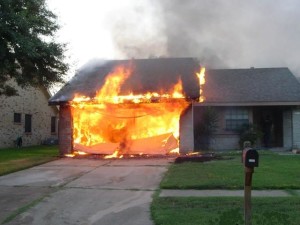It has been suggested that there are as many as 26 million of these breakers in use in the U.S. which means that in some conditions as many as one million of them may fail to provide proper fire protection.
Electrical Panel Hazards, But where are they?
Most homeowners whose houses are served by these panels are unaware of the hazards. So too are some inspectors and contractors. Because most homeowners do not order periodic electrical safety inspections, the presence of these panels is often undiscovered until an inspection made in the course of renovating or selling a property.
Our field experience indicates that even when problems occur with this equipment, often it is simply removed or replaced with little publicity. Neither manufacturers nor some electricians are inclined to frighten consumers. These breakers can fail to trip at an alarming rate. At a modest overload (135% of rating) switches that had never been touched (never mechanically switched) were energized on both poles. These failed 25% of the time, followed by a lockup that meant the switch would never trip in the future at any overload. Once these switches had been flipped on and off (mechanically energized), failures increased to 36%! Worse, when individual poles on these switches were energized under the same conditions, 51%of the “virgin” switches failed, and for switches that had been mechanically energized, a whopping 65% of them failed!

When a circuit breaker will not trip in response to an overload there is a serious risk of fire. Homeowners and renovators who encounter these panels should consider replacing them with new equipment. Panel replacement, can involve significant expense, typically $800 to $1200 depending on service size and other factors. But identifying one of these defects can lead to an argument and in some cases, even lawsuits! For example, a knowledgeable inspector or contractor observes one of these panels and recommends replacement. An owner or another inspector, unaware of the background, refuses to cooperate, and insists there is “no problem.” Who’s right? There is indeed “a problem.” FPE panels and circuit breakers are a “safety-related defect.” In some conditions the equipment may not provide the safety protection (against fire) that was intended.
This defect is associated with FPE panels and circuit breakers manufactured in the 1970’s and possibly extending to current equipment. Testing was performed in 1982-3 by Wright Malta Corporation for the US Consumer Product Safety Commission.
What actually happens to cause unsafe conditions? Testing performed on FPE 2-pole (240V) circuit breakers indicated that in some overload conditions, particularly when one pole of the breaker is overloaded, the circuit breaker will not trip. Some tests showed that as many as 65% of the circuit breakers would malfunction.
